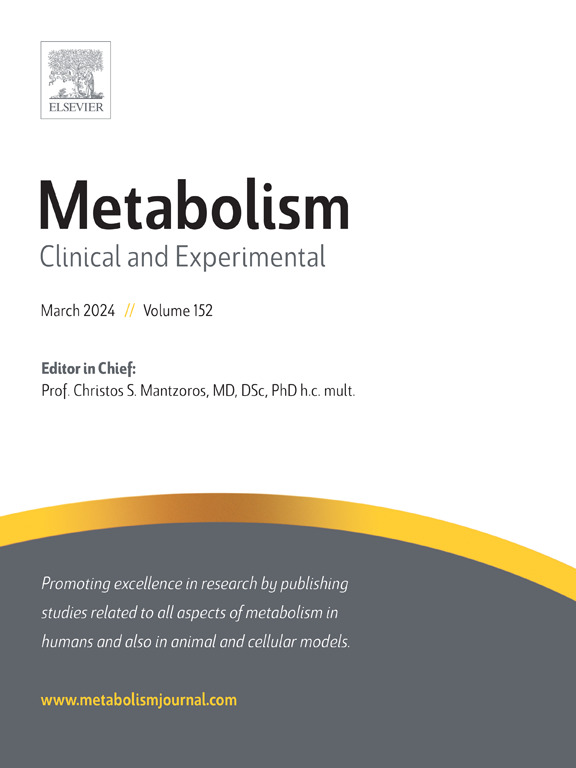Spatial lipidomics reveals sphingolipid metabolism as anti-fibrotic target in the liver
IF 10.8
1区 医学
Q1 ENDOCRINOLOGY & METABOLISM
引用次数: 0
Abstract
Background and aims
Steatotic liver disease (SLD), which encompasses various causes of fat accumulation in the liver, is a major cause of liver fibrosis. Understanding the specific mechanisms of lipotoxicity, dysregulated lipid metabolism, and the role of different hepatic cell types involved in fibrogenesis is crucial for therapy development.
Methods
We analysed liver tissue from SLD patients and 3 mouse models. We combined bulk/spatial lipidomics, transcriptomics, imaging mass cytometry (IMC) and analysis of published spatial and single-cell RNA sequencing (scRNA-seq) data to explore the metabolic microenvironment in fibrosis. Pharmacological inhibition of sphingolipid metabolism with myriocin, fumonisin B1, miglustat and D-PDMP was carried out in hepatic stellate cells (HSCs) and human precision cut liver slices (hPCLSs).
Results
Bulk lipidomics revealed increased glycosphingolipids, ether lipids and saturated phosphatidylcholines in fibrotic samples. Spatial lipidomics detected >40 lipid species enriched within fibrotic regions, notably sphingomyelin (SM) 34:1. Using bulk transcriptomics (mouse) and analysis of published spatial transcriptomics data (human) we found that sphingolipid metabolism was also dysregulated in fibrosis at transcriptome level, with increased gene expression for ceramide and glycosphingolipid synthesis. Analysis of human scRNA-seq data showed that sphingolipid-related genes were widely expressed in non-parenchymal cells. By integrating spatial lipidomics with IMC of hepatic cell markers, we found excellent spatial correlation between sphingolipids, such as SM(34:1), and myofibroblasts. Inhibiting sphingolipid metabolism resulted in anti-fibrotic effects in HSCs and hPCLSs.
Conclusions
Our spatial multi-omics approach suggests cell type-specific mechanisms of fibrogenesis involving sphingolipid metabolism. Importantly, sphingolipid metabolic pathways are modifiable targets, which may have potential as an anti-fibrotic therapeutic strategy.

背景和目的:脂肪性肝病(SLD)包括各种导致肝脏脂肪堆积的原因,是肝纤维化的主要原因。了解脂肪毒性的具体机制、脂质代谢失调以及参与纤维化的不同肝细胞类型的作用,对于开发疗法至关重要:我们分析了SLD患者和3种小鼠模型的肝组织。我们结合了大量/空间脂质组学、转录组学、成像质谱仪(IMC)以及已发表的空间和单细胞RNA测序(scRNA-seq)数据分析,以探索纤维化的代谢微环境。在肝星状细胞(HSCs)和人体精密切片肝脏(hPCLSs)中,使用myriocin、fumosinin B1、miglustat和D-PDMP对鞘脂代谢进行了药理抑制:结果:大量脂质组学发现,纤维化样本中的糖磷脂、醚脂和饱和磷脂酰胆碱增加。空间脂质组学检测到纤维化区域内富集了超过 40 种脂质,其中鞘磷脂(SM)的富集比例高达 34:1。利用大容量转录组学(小鼠)和已发表的空间转录组学数据分析(人类),我们发现纤维化中的鞘脂代谢在转录组水平上也出现失调,神经酰胺和糖磷脂合成的基因表达增加。对人类 scRNA-seq 数据的分析表明,鞘脂相关基因在非实质性细胞中广泛表达。通过将空间脂质组学与肝细胞标记物的 IMC 相结合,我们发现鞘磷脂(如 SM(34:1))与肌成纤维细胞之间存在极好的空间相关性。抑制鞘脂代谢可在造血干细胞和肝纤维化细胞中产生抗纤维化效应:我们的空间多组学方法提示了涉及鞘脂代谢的特定细胞类型纤维化机制。重要的是,鞘脂代谢途径是可改变的靶点,可能具有抗纤维化治疗策略的潜力。
本文章由计算机程序翻译,如有差异,请以英文原文为准。
求助全文
约1分钟内获得全文
求助全文
来源期刊

Metabolism: clinical and experimental
医学-内分泌学与代谢
CiteScore
18.90
自引率
3.10%
发文量
310
审稿时长
16 days
期刊介绍:
Metabolism upholds research excellence by disseminating high-quality original research, reviews, editorials, and commentaries covering all facets of human metabolism.
Consideration for publication in Metabolism extends to studies in humans, animal, and cellular models, with a particular emphasis on work demonstrating strong translational potential.
The journal addresses a range of topics, including:
- Energy Expenditure and Obesity
- Metabolic Syndrome, Prediabetes, and Diabetes
- Nutrition, Exercise, and the Environment
- Genetics and Genomics, Proteomics, and Metabolomics
- Carbohydrate, Lipid, and Protein Metabolism
- Endocrinology and Hypertension
- Mineral and Bone Metabolism
- Cardiovascular Diseases and Malignancies
- Inflammation in metabolism and immunometabolism
 求助内容:
求助内容: 应助结果提醒方式:
应助结果提醒方式:


